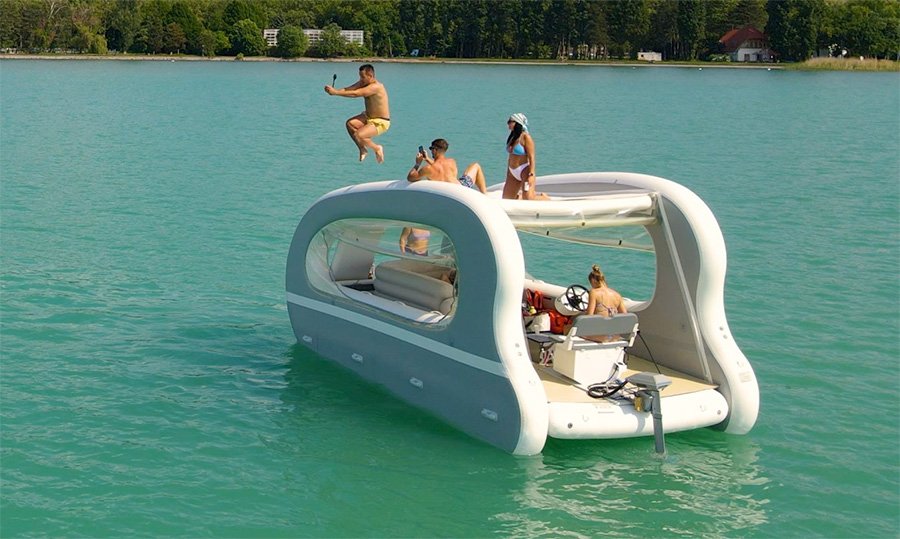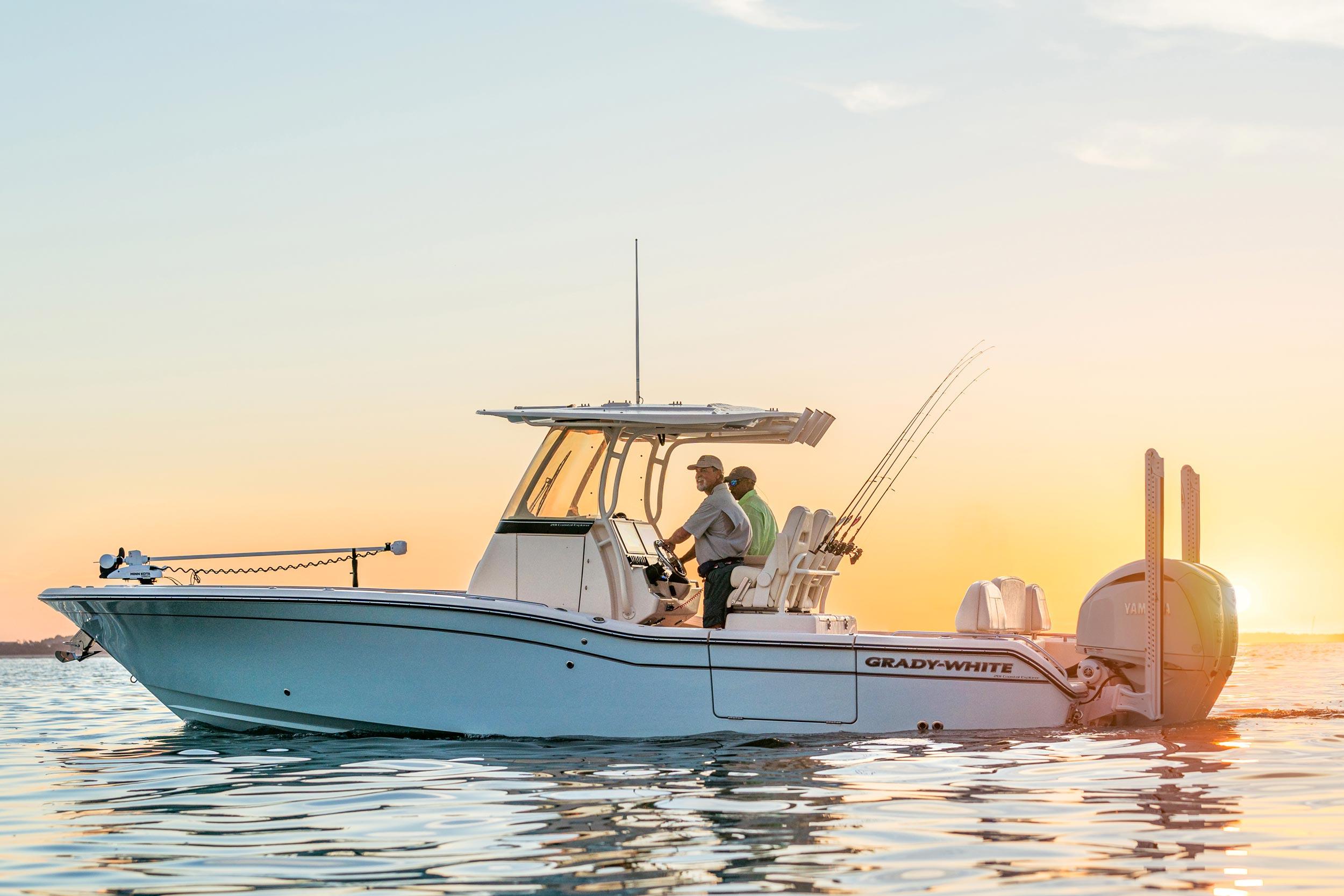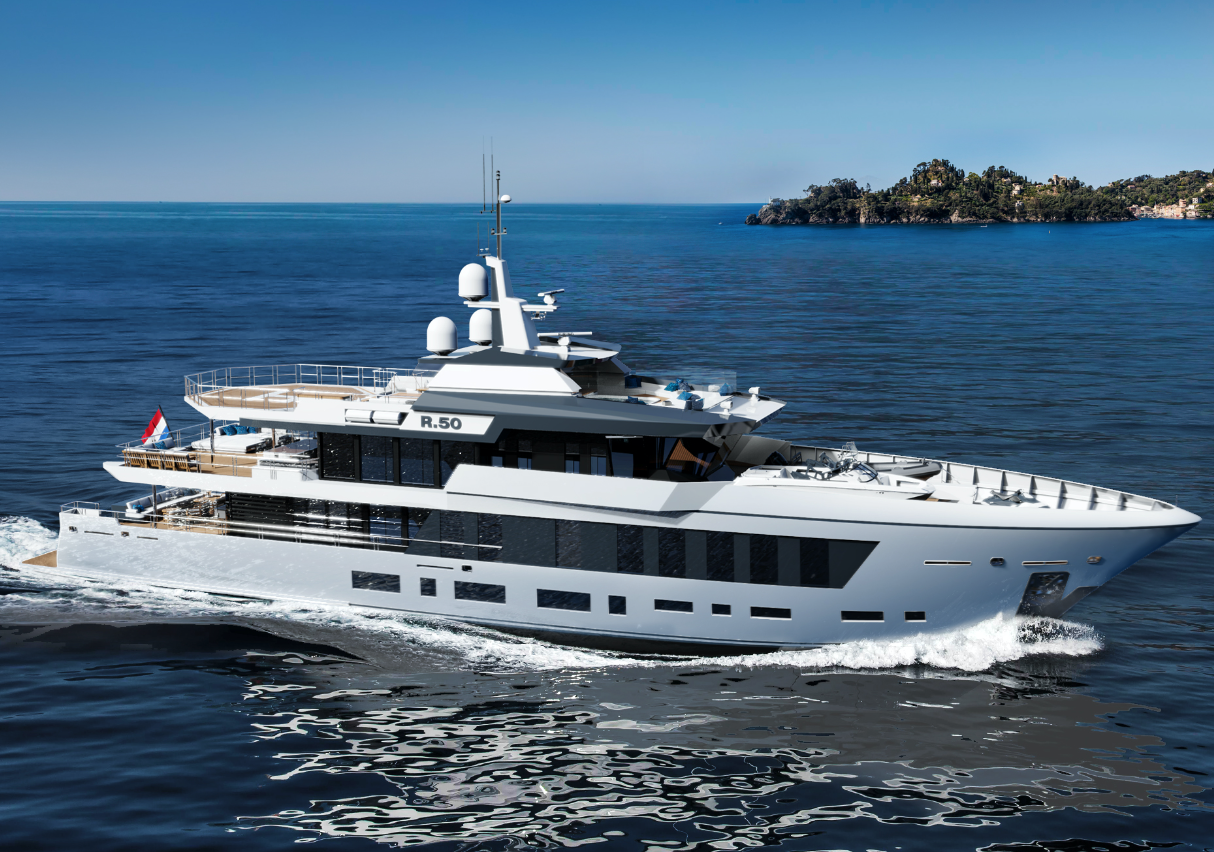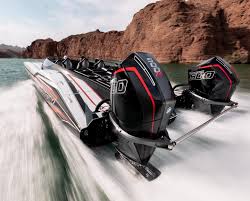Inflatable House Boat: Ultimate Guide for a Floating Adventure
Inflatable houseboats are an innovative and popular option for those looking to enjoy the water without the commitment and expense of a traditional houseboat. These versatile vessels offer a unique blend of comfort, convenience, and portability. Made from high-quality materials, inflatable houseboats provide a spacious and durable living space while still being easy to set up, maintain, and transport.

The design of an inflatable houseboat incorporates essential components such as inflatable pontoons or hull, a durable floor, and a living area complete with all the necessary amenities. These boats are perfect for leisurely cruises, allowing you to explore a variety of navigational territories with ease. Furthermore, performance and speed can be customized based on the size and specifications of the inflatable houseboat. With a variety of brands and styles available on the market, it's easy to find the perfect inflatable houseboat to fit your needs and budget.
Key Takeaways
- Inflatable houseboats provide a comfortable and portable alternative to traditional houseboats
- The design of these vessels can be customized to suit performance, speed, and navigational preferences
- A variety of brands and materials promise durable and affordable inflatable houseboat options

Essential Components of an Inflatable House Boat
An inflatable house boat combines comfort and convenience, offering a unique experience on the water. There are several essential components that make up a high-quality inflatable house boat, ensuring optimal performance and satisfaction for its users.
The hull of an inflatable house boat is typically made from durable, lightweight materials like PVC or Hypalon. This material allows for a portable and spacious living space that can be easily inflated, deflated, and stored. A catamaran design can also enhance stability, providing a comfortable cruising experience.
One of the key aspects of an inflatable house boat is its length. The right size will depend on individual needs such as storage requirements, desired living space, and budget constraints. An average length of an inflatable house boat can range from 20 to 45 feet.
In terms of performance, an inflatable house boat can be powered by an outboard motor or an inboard motor. Choosing between gas, diesel, or electric motors will impact the boat's overall performance and range. The Epropulsion Spirit 1.0 Plus 1kW electric motor, for instance, offers an eco-friendly alternative with quiet and clean propulsion.
As for power, the motor's horsepower (HP) should be matched to the size of the inflatable house boat to ensure optimal performance. Generally, a boat's length will dictate the necessary horsepower, with larger boats requiring more powerful engines to maintain proper speed and maneuverability.
Another significant aspect of an inflatable house boat is the console which houses the steering and control systems. This should be equipped with modern navigational tools and an ergonomic layout for ease of use.
To enhance the living conditions onboard an inflatable house boat, additional features may be included such as a toilet, shower, and storage facilities. These amenities provide convenience and comfort, ensuring a pleasant stay on the water.
One of the key benefits of using an inflatable house boat is its adaptability to utilize solar panels as a power source. Solar energy can be harnessed to power appliances, lighting, and even the boat's propulsion system. This feature not only saves on fuel costs but also contributes to a more environmentally friendly boating experience.
Finally, the performance of an inflatable house boat can be further optimized by considering factors such as its draft (0.45 m) and design category (category C). These specifications help ensure safe and efficient operation in various water conditions.
In conclusion, a well-equipped inflatable house boat offers a versatile and enjoyable experience on the water. By carefully considering the essential components and features, one can confidently choose an inflatable house boat tailored to their specific needs and preferences.

Convenience and Comfort Factors
Inflatable house boats offer a unique and enjoyable experience for those seeking both convenience and comfort during their time on the water. One of the primary advantages of these vessels is their ability to accommodate a variety of activities, such as sunbathing, seeking shade, or even preparing a meal in the onboard kitchen.
The comfortable design of inflatable house boats allows for up to six people to relax and enjoy their time on the water. With a weight capacity of around 120 kg, there is ample space for everyone to sit back and soak in the sunny day. On the boat, passengers can easily find areas for both sunbathing and shade, depending on their preferences.
A well-equipped kitchen is another factor that adds convenience for those spending time on an inflatable house boat. With the ability to prepare meals, passengers can avoid the hassle of constantly stopping at shore to grab food. This feature allows for a seamless and enjoyable experience, making the trip more memorable for everyone on board.
In summary, inflatable house boats provide multiple comfort and convenience factors for passengers. With ample space to accommodate six people comfortably, areas dedicated to sunbathing and shade, and an onboard kitchen, an inflatable house boat offers an enjoyable experience for all who embark on this unique adventure.

Sizing Specifications
Inflatable house boats come in various sizes to accommodate different needs and preferences. One notable specification for an inflatable house boat is the length of the hull (LH). A common length of hull for such boats is around 4.5 meters (14.7 feet). This size provides ample space for occupants while maintaining maneuverability in various water conditions.
The dimensions of an inflatable house boat can also be described in terms of length, width, and height. For example, a house boat might have dimensions of 450 x 250 x 200 cm. This means it measures 450 cm (14.7 feet) in length, 250 cm (8.2 feet) in width, and 200 cm (6.5 feet) in height. These dimensions work well for providing sufficient living space while still ensuring the boat is easy to transport and set up.
Some inflatable house boats may be larger, with a length of up to 6 meters (19.7 feet). These larger boats provide even more space for occupants, possibly accommodating additional amenities and features. However, larger boats may be more challenging to transport and maneuver, so it's essential to consider the intended usage and storage when selecting the appropriate size.
The dimensions discussed above are just examples of what inflatable house boats can offer. The specific sizing specifications may vary depending on the manufacturer and model. It is vital to research and understand the exact dimensions of the chosen inflatable house boat to ensure it meets the requirements and preferences of the potential user. Always consult the manufacturer's guidelines for precise measurements and limitations.

Performance and Speed
Inflatable house boats offer a unique combination of comfort and mobility. Their performance and speed capabilities can vary depending on factors such as design, material, and propulsion system. Generally, these boats are capable of reaching speeds ranging from 3 knots (5.5 km/h) to 6 knots (11 km/h), providing a smooth and enjoyable experience for those on board.
One of the factors influencing the speed of an inflatable house boat is the propulsion system. With electric boats, the top speed tends to be around 5 km/h or 3 knots, and they can cover a distance of around 50 km on a single charge. Advancements in electric propulsion technology, however, are constantly improving range and efficiency.
For those looking for a more powerful option, boat designs that incorporate drop-stitch fabric can improve performance and speed capabilities. By incorporating this material into the design of the inflatable hull, these boats can reach speeds of up to 10 km/h or 5.4 knots. This is a significant improvement over traditional inflatable house boats and allows for faster and more efficient travel between destinations.
While speed is one aspect of performance, it's essential to consider other factors such as stability and maneuverability, especially while navigating rough waters. Inflatable house boats made of drop-stitch fabric show increased stability and seakeeping, thanks to their high-performance hullforms.
In summary, inflatable house boats offer a wide range of performance and speed capabilities based on their design, materials, and propulsion systems. As technology advances, these boats will likely continue to improve, providing boating enthusiasts with more efficient, stable, and faster options for enjoying their time on the water.

Portability Advantages
Inflatable house boats offer several portability advantages over their traditional counterparts. One key benefit is their ability to be easily deflated and packed into a compact size. When not in use, these boats can be stored in small spaces, such as a car trunk. This makes transportation more convenient, allowing users to take their inflatable house boats on various adventures with ease.
Another advantage of inflatable house boats is the ease of assembly and disassembly. Inflating the boat can be done quickly with the help of an air pump, and deflating is as simple as releasing the air valves. This efficient process means that users can spend more time enjoying their time on the water, instead of struggling with cumbersome setup procedures. The lightweight nature of inflatable materials also contributes to their portability, making them easier to carry and maneuver.
In terms of space, inflatable house boats can offer a surprisingly generous living area. Some models can provide up to 8m2 of floor space when fully inflated. This allows for comfortable living quarters as well as space for essential equipment and amenities. The flexible nature of inflatable materials also enables customizable designs, allowing users to tailor their boat layout to their specific needs and preferences.
In summary, inflatable house boats offer numerous portability advantages. Their compact size when deflated, and the ease of assembly and disassembly, make them a convenient option for those seeking an easily transportable waterborne living solution. Additionally, their spacious interiors provide comfortable living conditions, while customizable designs cater to individual preferences and needs.

Navigational Territory
Inflatable houseboats are versatile and portable, making them suitable for exploring different navigational territories. These boats can efficiently navigate various water bodies, such as rivers, lakes, and the vast network of Canadian lakes and rivers.
One of the key advantages of inflatable houseboats is their lightweight and compact design, which allows them to access narrow and shallow waterways with ease. This makes them perfect for exploring the winding channels and tributaries of rivers, as they can maneuver in areas that may be inaccessible to larger boats.
Lakes are another popular destination for inflatable houseboats. These boats are suited for the calm waters and idyllic surroundings found in lakes. With their inflatable construction, houseboats provide a comfortable and stable platform for enjoying recreational activities like fishing, swimming, and sunbathing.
The extensive network of Canadian lakes and rivers offers an abundance of navigational territories to discover. Inflatable houseboats are ideal for venturing into the pristine natural landscapes of Canada’s vast waterways. From the Great Lakes to the countless rivers that traverse the country, these boats can easily journey through water with varying depths and conditions.
In summary, inflatable houseboats are well-suited for navigating in rivers, lakes, and the extensive network of Canadian lakes and rivers. Their lightweight and maneuverable design makes them a practical choice for exploring various types of water bodies, offering unique experiences and access to breathtaking natural landscapes.

Affordability Factors
When considering an inflatable house boat, it's important to factor in affordability as a key aspect. Inflatable house boats are an appealing choice for those looking for a cost-effective and flexible option on the water. This section will discuss the affordability factors of purchasing and owning an inflatable house boat.
Inflatable house boats are reasonably priced compared to their traditional counterparts. Due to the materials used and the ease of manufacturing, these boats often have a lower initial cost. The use of inflatable technology also ensures a lighter and more portable design, which translates to lower shipping and storage costs.
Prices for inflatable house boats can vary depending on the size, quality, and features, but generally fall within a more budget-friendly range for prospective boat owners. As a result, exploring the numerous options available on the market is essential in order to determine the best choice based on individual needs and budget constraints.
Maintaining an inflatable house boat is, in many cases, more affordable when compared to traditional house boats. Being lighter in weight, they often require smaller and less expensive engines, which can lead to lower fuel consumption. Moreover, repairs and maintenance for inflatable materials, such as patching punctures, can be much less costly than fixing damage on hard-shell boats.
One must not forget that owning a house boat also involves other expenses, like docking fees or storage costs during the off-season. Inflatable house boats offer more flexibility, as they can be deflated and stored in a smaller space when not in use, potentially saving owners money on storage costs.
In conclusion, inflatable house boats present an attractive option for those seeking an alternative and affordable way to experience life on the water. From the initial investment to the ongoing maintenance and storage costs, these boats offer many cost-saving benefits while still providing an enjoyable and flexible boating experience.

Brands and Recognition
In the world of inflatable houseboats, several brands have made a name for themselves, offering products that boast innovative features and designs. These companies are recognized for their high-quality, durable, and versatile inflatable houseboats that cater to various consumers' preferences.
One noteworthy brand is the Italian company that produces the electric inflatable catamaran. This state-of-the-art watercraft is seen as a dream come true for boating enthusiasts, offering a perfect balance of comfort, stability, and luxury. The catamaran's design includes renewable energy features such as solar sailing capacity and wireless technology, making it an eco-friendly choice for environmentally conscious consumers.
Another recognizable product in the inflatable houseboat market is a hovercraft-style vessel, which combines the best of both worlds- the stability of a traditional houseboat and the thrill of a high-speed hovercraft. Equipped with fenders for added protection and convenience, this game-changing design is changing the way people approach the boating experience.
Various inflatable houseboat companies understand the importance of providing not only top-notch products but also peace of mind for their customers. Hence, these brands offer solid warranties, ensuring that consumers can trust the quality and durability of their chosen watercraft. These warranties may cover any manufacturing defects, material issues, or other potential concerns that may arise during the boat's lifetime.
In summary, the inflatable houseboat market is continuously evolving, with brands consistently striving to deliver innovative products that cater to the needs of modern boating enthusiasts. From electric inflatable catamarans to hovercraft-style vessels, the recognizability of these companies and their products is primarily due to their commitment to quality, performance, and customer satisfaction.

Cruising Aspects
Inflatable houseboats offer a unique and versatile way to explore the waterways and engage in water-based recreational activities. These boats are designed for enhanced stability and maneuverability, making them perfect for cruising on both calm and rough waters. With their lightweight construction, inflatable houseboats can be easily towed behind a vehicle, allowing for convenient transportation and storage.
Cruising on an inflatable houseboat offers the flexibility to create customized day-long itineraries, enabling one to explore various locations and enjoy different water activities. The spacious pontoon design provides ample room for passengers to relax, socialize, and take in the beautiful surroundings. The addition of a bimini top ensures protection from the sun's rays, allowing for comfortable cruising throughout the day.
Inflatable houseboats come equipped with a range of features that enhance the overall cruising experience. These may include comfortable seating, inbuilt storage compartments, and convenient workstations. Consequently, passengers can effortlessly partake in activities such as fishing, swimming, and sightseeing while on their voyage.
To summarize, inflatable houseboats present a unique and enjoyable cruising experience with tailored day-long itineraries, the versatility to explore various waterways, and practical features that ensure comfort and convenience for occupants. Embracing this innovative boating solution opens up a world of endless recreational possibilities.

Material Quality and Build
Inflatable houseboats and rigid inflatable boats (RIBs) are gaining popularity due to their lightweight yet durable construction. The quality of materials and build is crucial for the longevity and functionality of these vessels.
High-quality materials are essential for constructing inflatable houseboats and RIBs. One key material in the construction of these vessels is the drop-stitch fabric, which allows for the creation of strong, lightweight, and rigid inflatable structures. Drop-stitch technology is widely used because it provides stability and strength, but it is important to note that it does come with a higher manufacturing cost due to specialized looms required for the process source.
Another important aspect in the build of inflatable houseboats is the choice of fabric for the pontoons. Marine-grade PVC fabric and Hypalon are popular for their durability, resistance to punctures, and UV protection. Hypalon is generally more expensive than PVC, but it provides better resistance to harsh environments and extensive use source.
The build quality of an inflatable houseboat or RIB also depends on the assembly techniques used. Seams and joints are critical points in the construction and require proper sealing to ensure water-tight integrity and overall durability. Heat-welded seams offer reliable and leak-free construction, as they join the materials without adhesives, resulting in a stronger bond.
In terms of structural support, many RIBs employ aluminum or fiberglass hulls, providing rigidity and improved performance on the water. Aluminum is preferred for its lightweight properties, corrosion resistance, and ease of fabrication source.
To summarize, the material quality and build of an inflatable houseboat or rigid inflatable boat are crucial factors in determining the vessel's durability and performance. From the choice of fabric to the assembly techniques and structural support, investing in high-quality materials and construction will ensure a safe and enjoyable experience on the water.

Frequently Asked Questions
What are the typical prices for inflatable house boats?
Inflatable house boats come in a variety of sizes and features, so the prices can vary greatly. Basic models can start from a few thousand dollars, while high-end luxury inflatable houseboats can cost up to several hundred thousand dollars. It is essential to determine your budget and requirements before starting your search.
Where can I find European inflatable houseboats for sale?
European manufacturers have a strong reputation for quality inflatable boats. To find European inflatable houseboats for sale, you can search for local dealerships, visit boat shows, or search online. Websites like The complete book of inflatable boats could offer more information on reputable European brands and sellers.
How durable and reliable are inflatable house boats?
Inflatable house boats, when built with high-quality materials and designed correctly, can be very durable and reliable. They can withstand harsh weather conditions and rough waters due to their flexible and resilient construction. Regular maintenance and appropriate storage can also ensure your inflatable houseboat lasts for many years.
Which type of inflatable boats are used by professionals like Navy SEALs?
Military professionals and rescue teams often use rigid-hulled inflatable boats (RHIBs) due to their high performance, stability, and durability. RHIBs have a solid hull structure combined with inflatable tubes, allowing them to be both lightweight and strong.
What are the key differences between electric and traditional inflatable house boats?
Electric inflatable house boats use electric motors, which provide quiet operation and lower emissions while traditional inflatable houseboats usually have gasoline or diesel engines. Electric houseboats have lower running costs due to decreased fuel consumption but may have lesser range and require more frequent charging or battery replacement.
Is living on an inflatable houseboat more affordable than a traditional houseboat?
Living on an inflatable houseboat can be more affordable overall due to lower initial purchase costs, maintenance costs, and fuel consumption compared to traditional houseboats. However, it is important to consider factors such as amenities, durability, and your desired lifestyle before deciding on which type of houseboat would be the best fit for you.
Q&A With Inflatable Houseboat Buyer's
Charlie, Sea Magazine: Good afternoon, everyone! This is Charlie from Sea Magazine, and today we're here with three boat enthusiasts who have recently invested in inflatable houseboats. Welcome, Amy, Brad, and Clara. We're excited to learn about your experiences.
Amy: Thanks, Charlie. It's great to be here!
Brad: Pleasure's all mine!
Clara: Happy to share!
Charlie: So, let's dive right in. Can any of you talk about the benefits of the Solar powered electric catamaran versus other inflatable boats?
Brad: Sure, Charlie. I recently bought an electricat inflatable boat. The Solar powered electric catamaran has been a game-changer. It's essentially an electric watercraft powered by solar cells, making it both eco-friendly and cost-effective. On sunny days, the solar power significantly extends my travel range.
Amy: That's right, Brad. And when you compare it to other inflatable boat designs, the electricat boasts inflatable tube compartments that ensure more buoyancy and stability.
Charlie: Speaking of inflatable boats, Clara, you mentioned you own the Electricat 450. What's unique about that?
Clara: Absolutely, Charlie. The Electricat 450 is a brilliant piece from the Italian manufacturer Solbion. It's compact enough that when deflated, I can fit the single component in my car trunk. The deck space is more spacious than you'd expect, offering a great view, especially during calm weather.
Amy: Yes, I have friends with the 450. What's intriguing is that no single component weighs too much, making it easy for transportation. Plus, the optional zippers can connect compartments, which is a plus during more inclement weather.
Charlie: Speaking of inclement weather, Brad, how do these boats fare in bad weather?
Brad: Well, Charlie, while they're fantastic for short trips and in calm or moderately choppy conditions, they're not ideal for more inclement weather. But that's why I love the transparent windows on mine – even in slightly bad weather, they provide shade inside while still offering a view.
Charlie: What about speed? How do these inflatable boats perform in terms of maximum and expected speed?
Clara: The Electricat 450 has a maximum speed that's pretty impressive for an inflatable boat. But the expected speed is more moderate and perfect for a relaxing cruise.
Amy: And with the solar power feature, the electric cat big model, for instance, is designed for efficiency over speed. On sunny days, it's all about enjoying the ride and the company, whether friends or family.
Brad: Exactly. The motor Max mass also dictates the speed. If you're on short trips or just staying near the waters edge, speed isn't a primary concern.
Charlie: Amy, you briefly mentioned about a feature for more shade inside?
Amy: Ah, yes! The three flexible panels on the roof. They're designed by Solbion too. These brief flexible panels not only collect solar power but can be adjusted to ensure there's shade inside, especially during sunny days.
Clara: And the best part is that they're light, so it doesn't feel like there's a heavy roof over your head. Plus, they give the option of having the back seats in shade while keeping the front open, offering a clear view.
Charlie: One last question for all of you: what's your favorite feature?
Brad: Mine has to be the engine. Quiet and efficient, it changes the boating experience altogether.
Amy: The deck space! It's perfect for family gatherings.
Clara: Transparent windows for me. They ensure I always have a great view, no matter the weather.
Charlie: Thank you, Amy, Brad, and Clara for this insightful discussion on inflatable houseboats. Safe boating to all!
Amy, Brad, & Clara: Thanks, Charlie! Safe seas!
Charlie is Editor-in-Chief of Sea Magazine







